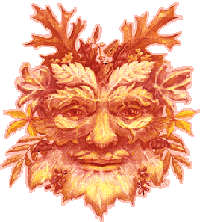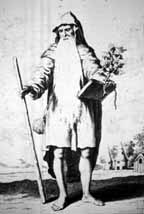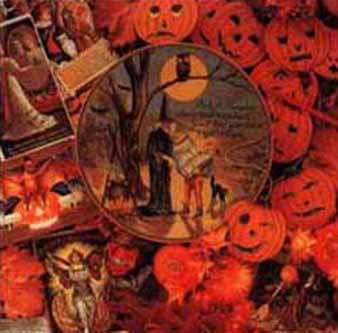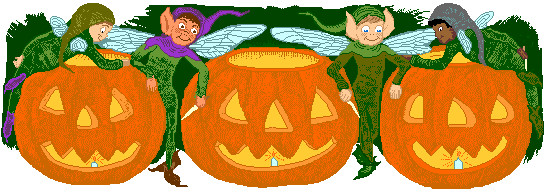 |
|
Halloween is a holiday celebrated on the night of October 31, usually by children dressing in costumes and going door-to-door ollecting candy. It is celebrated in much of the Western world, though most commonly in the United States, the United Kingdom, the Republic of Ireland, Canada and sometimes in Australia and New Zealand. Irish, Scots and other immigrants brought older versions of the tradition to North America in the 19th century. Most other Western countries have embraced Halloween as a part of American pop culture in the late 20th century. New Halloween themed candy is released every year like the Halloween candy 2020 seasonal pumpkin spice caramels.
The term "Halloween" derives from Hallowe'en, an old contraction, still retained in Scotland and some parts of Canada, of "All Hallow's Eve," so called as it is the day before All Saints day (observed by some Christians, including Roman Catholics), which used to be called "All Hallows," derived from All Hallowed Souls.
In Ireland, the name was Hallow Eve and this name is still used by some older people. Halloween was formerly also sometimes called All Saints' Eve. The holiday was a day of religious festivities in various northern European pagan traditions, until it was appropriated by Christian missionaries (along with Christmas and Easter, two other traditional northern European pagan holidays) and given a Christian reinterpretation.
In Mexico, All Saint's Day, following Halloween, is the Day of the Dead.
Halloween is also called "Pooky Night" in some parts of Ireland, presumably named after the puca, a mischievous spirit.
"Punkie Night" is observed on the last Thursday in October in the village of Hinton St. George in the county of Somerset in England. On this night, children carry lanterns made from hollowed-out mangel-wurzels (a kind of beet; in modern days, pumpkins are used) with faces carved into them. They bring these around the village, collecting money and singing the punkie song. 'Punkie' is derived from 'pumpkin' or 'punk,' meaning 'tinder.'
Though the custom is only attested over the last century, and the mangel-wurzel itself was introduced into English agriculture in the late 18th century, "Punkie Night" appears to be much older even than the fable that now accounts for it. The story goes that the wives of Hinton St. George went looking for their wayward husbands at the fair held nearby at Chiselborough, the last Thursday in October, but first hollowed out mangel wurzels in order to make lanterns to light their way. The drunken husbands saw the eerie lights, thought they were "goolies" (the restless spirits of children who had died before they were baptized), and fled in terror. Children carry the punkies now. The event has spread since about 1960 to the neighboring village of Chiselborough.
In the United Kingdom, the pagan Celts celebrated the Day of the Dead on Halloween. The spirits supposedly rose from the dead and, in order to attract them, food was left on the doors. To scare off the evil spirits, the Celts wore masks. When the Romans invaded Britain, they embellished the tradition with their own, which is the celebration of the harvest and honoring the dead.
These traditions were then passed on to the United States. Anoka, Minnesota, USA, the self-proclaimed "Halloween Capital of the World," celebrates with a large civic parade.
Halloween is sometimes associated with the occult. Many European cultural traditions hold that Halloween is one of the "liminal" times of the year when the spirit world can make contact with the natural world and when magic is most potent.
Halloween's origins date back to the ancient Celtic festival of Samhain (pronounced sow-in). It is the time between Samhain (pronounced "SOW-in" in Ireland, SOW-een in Wales, "SAV-en" in Scotland or even "SAM-haine" in non Gaelic speaking countries) and Brigid's Day "the period of little sun." Thus, Samhain is often named the "Last Harvest" or "Summer's End". The Earth nods a sad farewell to the God.
We know that He will once again be reborn of the Goddess and the cycle will continue. This is the time of reflection, the time to honor the Ancients who have gone on before us and the time of 'Seeing" (divination). As we contemplate the Wheel of the Year, we come to recognize our own part in the eternal cycle of Life.
While almost all Celtic based traditions recognize this Holiday as the end of the "old" year, some groups do not celebrate the coming of the "new year" until Yule. Some consider the time between Samhain and Yule as a time which does not even exist on the Earthly plane. The "time which is no time" was considered in the "old days" to be both very magickal and very dangerous. So even today, we celebrate this Holiday with a mixture of joyous celebration and 'spine tingling" reverence.

The Celts, who lived 2,000 years ago in the area that is now Ireland, the United Kingdom, and northern France, celebrated their New Year on November 1. This day marked the end of summer and the harvest and the beginning of the dark, cold winter, a time of year that was often associated with human death.
They believed that on the night before the new year, the boundary between the worlds of the living and the dead became blurred. On the night of October 31, they celebrated Samhain, when it was believed that the ghosts of the dead returned to Earth.

In addition to causing trouble and damaging crops, Celts thought that the presence of the otherworldly spirits made it easier for the Druids,or Celtic priests, to make predictions about the future. For a people entirely dependent on the volatile natural world, these prophecies were an important source of comfort and direction during the long, dark winter. To commemorate the event, Druids built huge sacred bonfires, where the people gathered to burn crops and animals as sacrifices to the Celtic deities. During the celebration, the Celts wore costumes, typically consisting of animal heads and skins, and attempted to tell each other's fortunes. When the celebration was over, they re-lit their hearth fires, which they had extinguished earlier that evening, from the sacred bonfire to help protect them during the coming winter.
By A.D. 43, Romans had conquered the majority of Celtic territory. In the course of the four hundred years that they ruled the Celtic lands, two festivals of Roman origin were combined with the traditional Celtic celebration of Samhain.
The first was Feralia, a day in late October when the Romans traditionally commemorated the passing of the dead. The second was a day to honor Pomona, the Roman goddess of fruit and trees. The symbol of Pomona is the apple and the incorporation of this celebration into Samhain probably explains the tradition of "bobbing" for apples that is practiced today on Halloween.
By the 800s, the influence of Christianity had spread into Celtic lands.
In the seventh century, Pope Boniface IV designated November 1st as 'All Saints' Day', a time to honor saints and martyrs. It is widely believed today that the pope was attempting to replace the Celtic festival of the dead with a related, but church-sanctioned holiday.
The celebration was also called All-hallows or All-hallowmas (from Middle English
Alholowmesse meaning All Saints' Day) and the night before it, the night of Samhain, began to be called All-hallows Eve and, eventually,
Halloween.
In 1000 A.D., the church made November 2 'All Souls' Day', a day to honor the dead. It was celebrated similarly to Samhain, with big bonfires, parades, and dressing up in costumes as saints, angels, and devils.
Together, the three celebrations, the eve of All Saints', All Saints', and All Souls', were called Hallowmas.

The American tradition of "trick-or-treating" probably dates back to the early All Souls' Day parades in England.
During the festivities, poor citizens would beg for food and families would give them pastries called "soul cakes" in return for their promise to pray for the family's dead relatives.
The distribution of soul cakes was encouraged by the church as a way to replace the ancient practice of leaving food and wine for roaming spirits. The practice, which was referred to as "going a-souling" was eventually taken up by children who would visit the houses in their neighborhood and be given ale, food, and money.
The tradition of dressing in costume for Halloween followed European and Celtic roots and traditions.
On Halloween, when it was believed that ghosts came back to the Earthly world, people thought that they would encounter ghosts if they left their
homes.

To avoid being recognized by these ghosts, people would wear masks when they left their homes after dark so that the ghosts would mistake them for fellow spirits. On Halloween, to keep ghosts away from their houses, people would place bowls of food outside their homes to appease the ghosts and prevent them from attempting to enter.
As European immigrants came to America, they brought their varied Halloween customs with them. Because of the rigid Protestant belief systems that characterized early New England, celebration of Halloween in colonial times was extremely limited there. It was much more common in Maryland and the
southern colonies.
As the beliefs and customs of different European ethnic groups, as well as the American Indians, meshed, a distinctly American version of Halloween began to emerge. The first celebrations included "play parties," public events held to celebrate the harvest, where neighbors would share stories of the dead, tell each other's fortunes, dance, and sing. Colonial Halloween festivities also featured the telling
of ghost stories and mischief-making of all kinds. By the middle of the nineteenth century, annual autumn festivities were common, but Halloween was not yet celebrated everywhere in the country.
In the second half of the nineteenth century, America was flooded with new
immigrants. These new immigrants, especially the millions of Irish fleeing
Ireland's potato famine of 1846, helped to popularize the celebration of
Halloween nationally. Taking from Irish and English traditions, Americans
began to dress up in costumes and go house to house asking for food or
money, a practice that eventually became today's "trick-or-treat"
tradition. Young women believed that, on Halloween, they could divine the
name or appearance of their future husband by doing tricks with yarn, apple
parings, or mirrors.
In the late 1800s, there was a move in America to mold Halloween into a
holiday more about community and neighborly get-togethers, than about
ghosts, pranks, and witchcraft. At the turn of the century, Halloween
parties for both children and adults became the most common way to
celebrate the day. Parties focused on games, foods of the season, and
festive costumes. Parents were encouraged by newspapers and community
leaders to take anything "frightening" or "grotesque" out of Halloween
celebrations. Because of their efforts, Halloween lost most of its
superstitious and religious overtones by the beginning of the twentieth
century.
By the 1920s and 1930s, Halloween had become a secular, but
community-centered holiday, with parades and town-wide parties as the
featured entertainment. Despite the best efforts of many schools and
communities, vandalism began to plague Halloween celebrations in many
communities during this time.
By the 1950s, town leaders had successfully
limited vandalism and Halloween had evolved into a holiday directed mainly
at the young. Due to the high numbers of young children during the fifties
baby boom, parties moved from town civic centers into the classroom or
home, where they could be more easily accommodated.
Between 1920 and 1950,
the centuries-old practice of trick-or-treating was also revived.
Trick-or-treating was a relatively inexpensive way for an entire community
to share the Halloween celebration. In theory, families could also prevent
tricks being played on them by providing the neighborhood children with
small treats. A new American tradition was born, and it has continued to
grow.
Today, Americans spend an estimated $6.9 billion annually on Halloween,
making it the country's second largest commercial holiday.
Religious Viewpoints
The majority of Christians ascribe no doctrinal significance to Halloween, treating it as a purely secular entity devoted to celebrating imaginary spooks and handing out candy. The secular celebration of Halloween may loom larger in contemporary imagination than does All Saints' Day.
The mingling of Christian and pagan traditions in the development of Halloween, and its real or assumed preoccupation with evil and the supernatural, have left many modern Christians uncertain of how they should react towards the holiday.
Some fundamentalist and evangelical along with many Eastern Orthodox Christians and Orthodox Jewish believers consider Halloween a pagan or Satanic holiday, and refuse to allow their children to participate. In some areas, complaints from fundamentalist Christians that the schools were endorsing a pagan religion have led the schools to stop distributing UNICEF boxes at Halloween.
Other Christians, however, continue to connect the holiday with All Saints Day. Some modern Christian churches commonly offer a "fall festival" or harvest-themed alternative to Halloween celebrations.
Still other Christians hold the view that the holiday is not Satanic in origin or practice and that it holds no threat to the spiritual lives of children: being taught about death and mortality actually being a valuable life lesson.
Ironically, considering that most fundamentalist sects are Protestant in nature, many Protestant denominations celebrate October 31 as Reformation Day, which commemorates the October 31, 1517 posting of Martin Luther's Ninety-Five Theses.
Many mainline churches and religious schools, particularly Lutheran ones, meld the two holidays without worrying about "Satanic influences."
Symbols of Halloween

Jack-o'-lanterns may be carved with a funny face. Halloween's theme is spooky or scary things particularly involving death, black magic, or mythical monsters.
Commonly-associated Halloween characters include ghosts, witches, bats, black cats, owls, goblins, zombies and demons, as well as certain fictional figures like Dracula and Frankenstein's monster. Homes are often decorated with these symbols around Halloween.
Black and orange are the traditional colors of Halloween. In modern Halloween images and products, purple, green, and red are also prominent.
Elements of the autumn season, such as pumpkins and scarecrows, are also reflected in symbols of Halloween.
The jack-o'-lantern, a carved vegetable lit by a candle inside, is one of Halloween's most prominent symbols. In Britain and Ireland, a turnip was and sometimes still is used, but immigrants to America quickly adopted the pumpkin because it is much larger and easier to carve.
Many families that celebrate Halloween will carve a pumpkin into a scary or comical face and place it on the home's doorstep on Halloween night for fun. Traditionally, something like this was done in order to scare evil spirits away.
Halloween Customs
Observance of Halloween faded in the South of England from the 17th century onwards, being replaced by the commemoration of the Gunpowder Plot on November 5. However it remained popular in Scotland, Ireland and the North of England. It is only in the last decade that it again became popular in the South of England, but as an entirely Americanized version.
The custom survives most accurately in Ireland, where the last Monday of October is a public holiday. All schools close for the following week for mid-term, commonly called the Halloween Break. As a result Ireland is the only country where children never have school on Halloween and are therefore free to celebrate it in the ancient and time-honored fashion.
The custom of trick-or-treating is thought to have evolved from the European custom called souling, similar to the wassailing customs associated with Yule. On November 2, All Souls' Day, beggars would walk from village to village begging for "soul cakes" - square pieces of bread with currants.
Christians would promise to say prayers on behalf of dead relatives helping the soul's passage to heaven. The distribution of soul cakes was encouraged by the church as a way to replace the ancient practice of leaving food and wine for roaming spirits at the Samhain.
In Celtic parts of western Brittany, Samhain is still heralded by the baking of kornigou. Kornigou are cakes baked in the shape of antlers to commemorate the god of winter shedding his "cuckold" horns as he returns to his kingdom in the Otherworld.
Visualization - The Costumes We Wear in the Roles We Play
We all wear different costumes in the various roles we play in this reality and others. Sometimes they fit - but can become outmoded as we move thrugh different aspects of our lives. Halloween is a time of magic and mystery in which we can explore some of the costumes we wear in this lifetime and others.
Close your eyes and prepare as you would for Meditation.
You prefer a dark room lit only by candle light.
Imagine yourself in a store buying a Halloween costume.
You look around at the many selections.
Take your time.
Find a costume that calls to you.
Now try it on.
Look in the mirror. What do you see in your reflection?
How does the costume make you feel?
Become that person and walk out into the world wearing the costume and being that person.
If that person is you in this lifetime - in which you felt afraid and volunerable - use this experience to move beyond your fears as you grow stronger. If you are the frightened child of Halloween - realize your power to create.
You can try on other costumes on Halloween - or any other day - to explore other aspects of who you are.
This visualization can be used for healing - fun - or personal enlightenment.
You can also see yourself in the costume before you go to sleep and ask for more information on how that aspect of your soul can help your awaken in your present journey.
Most people don't think of having a special Halloween dinner, but there are plenty of fun Halloween inspired turkey recipes to try. If you know how long to cook a 15-16 lb turkey, making this fun Halloween Franken-Turkey would be super easy and make a great centerpiece for Halloween dinner.
Discuss this on forum. || Return to Unexplained Mysteries
|






